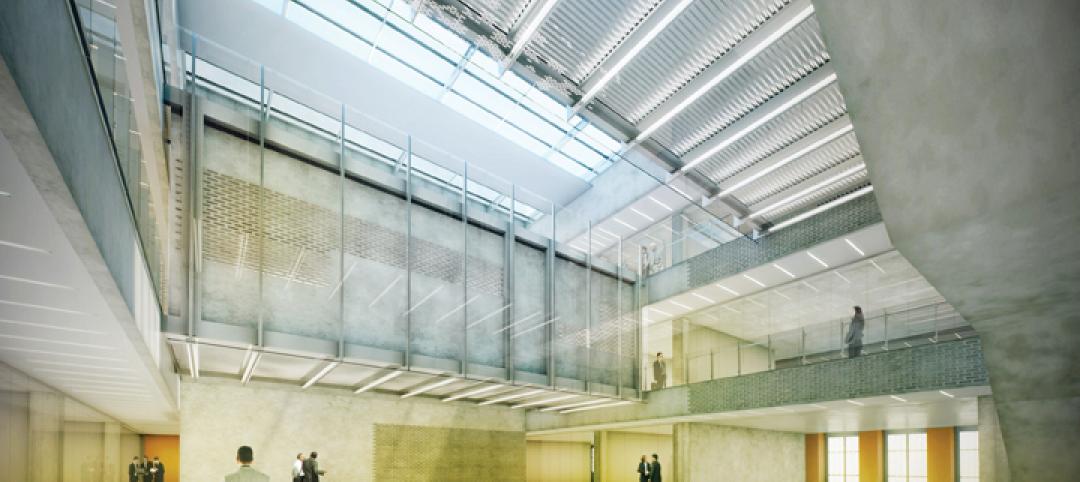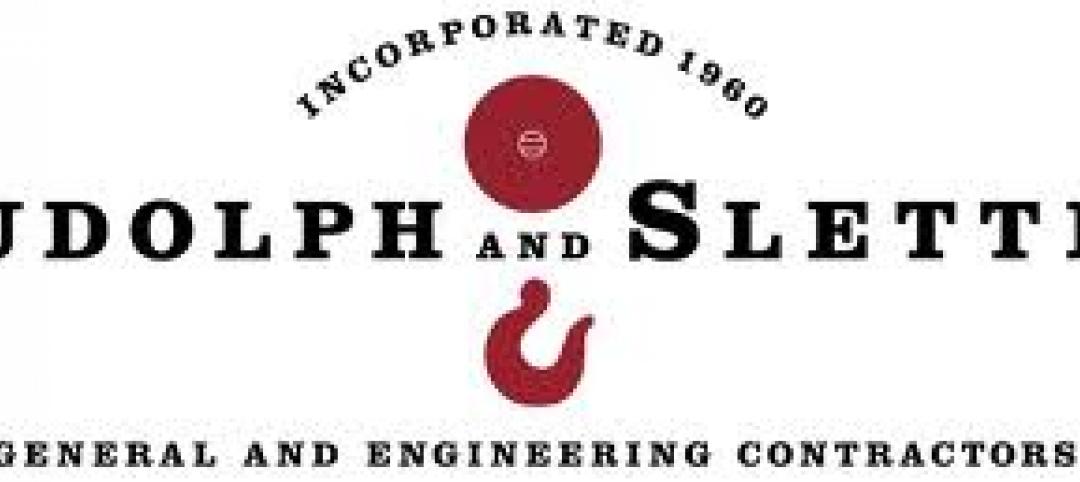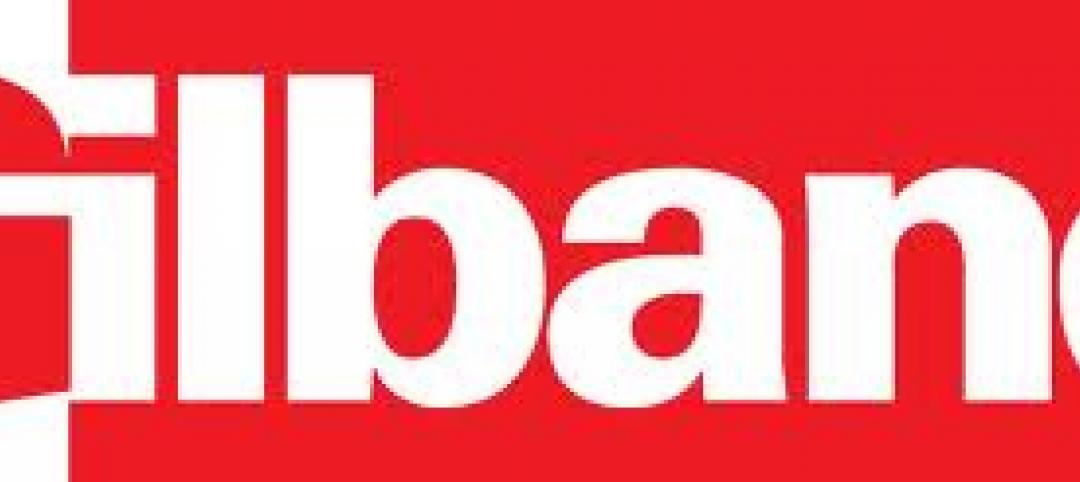 |
Insulated metal panels, or IMPs, have been a popular exterior wall cladding choice for more than 30 years. These sandwich panels are composed of liquid insulating foam, such as polyurethane, injected between two aluminum or steel metal face panels to form a solid, monolithic unit. The result is a lightweight, highly insulated (R-14 to R-30, depending on the thickness of the panel) exterior cladding system that provides a sleek, contemporary design aesthetic for virtually any building type.
In an effort to help AEC professionals work with insulated metal panel systems, BD+C turned to a few experts for tips on specifying and designing with IMPs. Here are seven important tips to keep in mind when working with IMPs for your next project:
1. Make sure the fasteners are compatible with the IMP substrate. Specifying the wrong fastener type can lead to corrosion between dissimilar metal types, says Scott Kriner, president of Green Metal Consulting Inc., Macungie, Pa., and technical director with the Metal Construction Association (MCA), Glenview, Ill. "It's critical that the installer doesn't just grab some screws off a hardware store shelf," he says.
 |
| The high insulation value (R-14 to R-30, depending on the thickness of the panel) of insulated metal panels makes them ideal for freezers and coldstorage buildings, such as the Land O Frost cold-storage building in Madisonville, Ky., which is clad with IMPs in various thicknesses from Kingspan. |
For example, galvanized steel fasteners—a common fastener type—are not compatible with aluminum panels. Only aluminum and 300 series stainless steel fasteners are compatible with aluminum panels, according to the MCA.
Corrosion can result in potential risk to the integrity, performance, and aesthetics of the IMP system. To prevent dissimilar metal corrosion at the connection point, fasteners should be made of the same material as the wall systems whenever possible. At the very least, the fastener should display equivalent corrosion resistance to the material being fastened into, according to MCA's Technical Bulletin "Compatibility of Fasteners with Metal Roof and Wall Panels." The bulletin includes a helpful fastener/panel compatibility guide (www.metalconstruction.org/pubs).
2. Specify IMP color early in the design process. Color options may be limited for IMP projects located in extremely hot or cold climates. Due to the insulated nature of the panels, the temperature differential between the face and the liner side of the panel can be substantial enough to cause stress within the panel. This situation is exacerbated when certain colors are specified in extreme climates, says Rick Brow, director of marketing with CENTRIA. He recommends that AEC professionals verify potential color limitations with the IMP supplier early in the design process.
"For instance, during the erection of a panel on a sunny winter day, a dark-color panel face sheet may expand while the cold liner side of the panel, which is insulted from the face, will not," says Brow. This can cause the panel to bow. Forcing the panel to remain flat by fastening at supports may overstress the panel. In this case, shortening the total length of the panels will prevent bowing.
3. Avoid support systems that span from the top of slab to the underside of slab. This type of approach, which is typical of many stud support systems, may transfer inter-story movement into the panel joint, which can result in crushed panels, broken seals, and failed panel connections, according to Brow. Special detailing from the IMP manufacturer is required to accommodate this type of support system.
4. Follow the manufacturer's guidelines for joinery between panels. IMPs are a highly engineered wall or roof system that functions as an air barrier, water barrier, and thermal insulator. Joinery detailing and installation are of utmost importance to ensure the panels form a solid air/water/thermal barrier. Kriner advises AEC professionals to consult with the individual manufacturer on proper joint detailing procedures.
"While most IMP manufacturers employ a tongue-and-groove joint approach using a concealed fastener clip system, the difference between systems gets pretty intricate when you start talking about the sealants, fasteners, gaskets—all the techniques used to close the joints," says Kriner. "Manufacturers have very specific, and, in some cases, proprietary fastening techniques that are used to form a solid barrier with thermal performance and barrier protection."
5. Get the panel alignment just right. "Since insulated metal panels rely on liner seal technology, proper girt steel alignment is imperative to assure the weather integrity of the system," says CENTRIA's Brow. Misaligned panels may also lead to structural issues. Brow says panel supports should be properly aligned and designed to support the loads transferred at the insulated metal panel fastening points.
6. Account for panel movement. Compared to concrete or masonry cladding elements, metal panel systems have higher coefficients of expansion for thermal movement, according to James N. Chiropolos, RA, associate principal with Wiss, Janney, Elstner Associates, Northbrook, Ill., and author of Building Envelope Design Guide — Panelized Metal Wall Systems (www.wbdg.org/design/env_wall_panelizedmetal.php).
Chiropolos says designers of metal panel systems need to calculate the expected movement of the panels due to changes of temperature. Joints between panels must be wide enough to accommodate thermal expansion and differential movements between panels. Joint sizes can vary from a quarter-inch wide for small panels to one inch wide for larger panels. Factors that influence joint size include panel size, panel location on the building, and tolerance issues.
7. Sealant installation is crucial to barrier integrity. Sealant must be installed with proper marriage beads to maintain consistent air and moisture barriers at the liner side of the panel. "One critical seal that must be done properly is the marriage bead that ties the sealant at the panel end joint to the panel liner side seal," says Brow.
Related Stories
| May 9, 2012
Shepley Bulfinch given IIDA Design award for Woodruff Library?
The design challenges included creating an entry sequence to orient patrons and highlight services; establishing a sense of identity visible from the exterior; and providing a flexible extended-hours access for part of the learning commons.
| May 8, 2012
Skanska USA hires Zamrowski as senior project manager
In his new role at Skanska, Zamrowski will serve as the day-to-day on-site contact for select Pennsylvania-based projects during all phases of construction.
| May 7, 2012
4 more trends in higher-education facilities
Our series on college buildings continues with a look at new classroom designs, flexible space, collaboration areas, and the evolving role of the university library.
| May 3, 2012
2012 BUILDING TEAM AWARDS: Rush University Medical Center
This fully integrated Building Team opted for a multi-prime contracting strategy to keep construction going on Chicago’s Rush University Medical Center, despite the economic meltdown.
| May 3, 2012
Ground broken for $94 million hospital expansion at Scripps Encinitas
New facility to more than double emergency department size, boost inpatient beds by 43%.
| May 3, 2012
Rudolph and Sletten, Inc. wins CMAA award
Firm recognized for the renovation of Grossmont-Cuyamaca Community College’s Student Administrative & Griffin Student Center.
| May 2, 2012
Building Team completes two additions at UCLA
New student housing buildings are part of UCLA’s Northwest Campus Student Housing In-Fill Project.
| May 1, 2012
Time-lapse video: World Trade Center, New York
One World Trade Center, being built at the site of the fallen twin towers, surpassed the Empire State Building on Monday as the tallest building in New York.
| May 1, 2012
Gilbane to build $100 million cranberries manufacturing facility
Gilbane to provide design build services for a new Lean manufacturing facility for Ocean Spray Cranberries Inc., beverage products.
















